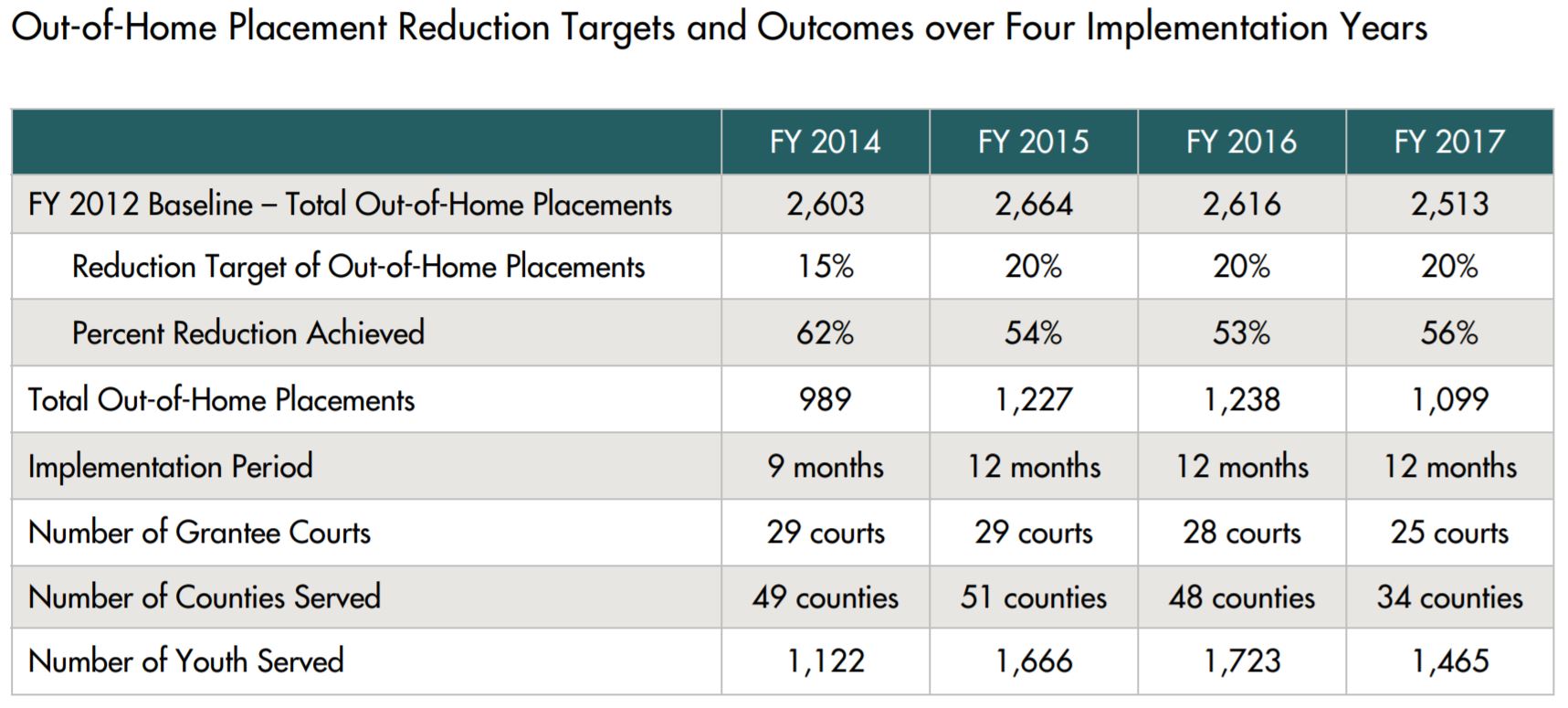As Bill Gates famously said in his book, “The Road Ahead” (1996), “We always overestimate the change that will occur in the next two years and underestimate the change that will occur in the next ten.”

Joe Vignati
At the Department of Juvenile Justice in Georgia, Gov. Nathan Deal and his leadership team have seen remarkable change in half that time.
In 2013, the Georgia Department of Juvenile Justice (GA DJJ) was identified by Gov. Deal as a department where change was possible and reform was necessary. Commissioner Avery Niles took a leading role in orchestrating the process of change. At the time, GA DJJ was spending nearly two-thirds of its $300 million budget on out-of-home placements for youth (about $90,000 per bed per year), was experiencing readjudication rates of more than 50 percent (65 percent for youth leaving Georgia’s youth facilities) and was overseeing inconsistent community-based practices. As stated in the report by the Georgia Council on Criminal Justice Reform in July 2013, “Georgia’s juvenile justice system, which was heavily reliant on expensive, out-of-home facilities, [was] producing poor results for taxpayers and youth alike.”

Dan Edwards
Recommendations from the Reform Council and others were designed to: a) focus out-of-home placements on high-level offenders and b) divert lower-level offenders into programs proven to reduce recidivism. These reforms, if implemented successfully, could improve outcomes for Georgia’s youth, improve public safety and avoid unnecessary spending on programs or facilities and thereby save up to $85 million over a 10-year period.
Many of these proposals were included in HB 242, which passed the General Assembly unanimously and was signed into law by Gov. Deal on May 2, 2013. At the signing, the governor noted that “we want to see more of Georgia’s nonviolent young offenders who have made mistakes get their lives back together and reenter society as productive citizens. If we address the issues early on, perhaps we can successfully divert them from wasting much of their adult years sleeping on expensive prison beds.”
Key strategies on the path to reform
To transform its management approach, Georgia first decided to expand community-based options for youth on probation across the state, a goal pursued in part through creation of an incentive grant program. For counties with historically high rates of placements, state and federal funds from the incentive grant program were tied to evidence-based programs shown to be effective with a juvenile population. The Juvenile Justice Incentive Grant Program offered grants to counties whose juvenile courts would implement evidence-based programs proven to reduce recidivism with a juvenile population; i.e. multisystemic therapy, functional family therapy, aggression replacement training, Thinking for a Change, Seven Challenges and others.
The state also focused on the implementation of validated, statewide risk assessments and state support for developing local capacity for these services through trainings and fidelity monitoring. A statewide data collection strategy for all juvenile justice partners allowed for the completion and sharing of assessments for all juvenile courts.
These changes were implemented starting in 2012. Five years later, there are numerous examples of practical things being done to impact the lives of our young people:
- We are now properly assessing and placing youth in appropriate settings, based on statewide risk assessment instruments validated by the National Council on Crime and Delinquency.
- We have taken two detention centers and one youth development campus offline, representing 259 beds.
- As of December 2014, every judicial circuit in the state has access to at least one evidence-based intervention program.
- We are assisting communities by providing state funding for local family-based services through the juvenile justice incentive grant program ($12 million in fiscal year 2018).
- We are increasing capacity for evidence-based models proven to improve outcomes.
The voluntary juvenile justice incentive grant program will complete its fifth year of operation at the end of this month, having served more than 6,000 youth since 2013.

Juvenile Justice Incentive Grant Program Funding Committee
.
Big reductions
Overall, since 2013, Georgia has reduced the number of youth in secure confinement by 36 percent and the number of youth in secure detention by 11 percent. During same time, overall juvenile commitments to the Department of Juvenile Justice have decreased by 46 percent. These decreases have occurred during a time period when Georgia’s juvenile population has grown by more than 2 percent. Participating counties have realized a 53 percent decrease in commitments to the Department of Juvenile Justice over their 2012 prereform rates.
Through the provision of these community-based services, we have been able to divert youth who previously would have been placed out of home in secure facilities, at a cost of $90,000 a year, into effective services. This reduced costs while still protecting public safety. Before reform, our juvenile system was using only one gear, the detention gear. Just like a bicycle needs different gears to work effectively and efficiently in different situations, Georgia is now rolling forward with all its gears.
This responsible approach to managing our juvenile justice resources has made our state safer. By leading the way in reducing commitments, juvenile reform in Georgia has made it possible not only to avoid construction of new facilities, but to reduce the population in existing facilities, so those facilities are safer. The cost avoidance that goes along with these continued reductions will enable Georgia to continue its investment in community-based solutions.
Joe Vignati is assistant commissioner of the Georgia Department of Juvenile Justice and has been involved in all aspects of Georgia’s juvenile justice system for the past 31 years.
Dan Edwards is president of Evidence-Based Associates and an advocate for the use of high-quality programs, evidence-informed implementation strategies and data-driven decision-making – applied faithfully in service of “at-opportunity” children, youth and families.
This column has been updated.

The state of Nebraska went through similar reform in 2013 and granted detention numbers did decrease but overall has been a huge disaster. High risk youth have been giving chance after chance in the community before detention is ever utilized. The accountability factor has pretty much been removed from the table when dealing with youth. Probation Administration in Nebraska feel that detention does more harm on these youth and have implemented many in home services. They stress using motivational interviewing techniques on these youth to help change negative behaviors and cog groups. From what I can see with the current reform is that youth are aging out of the Juvenile system and walking right into the adult system with new charges and no consequence’s for behavior in the juvenile system. So Georgia you may decrease your incarceration rate in the Juvenile system but I believe that your adult system within the next few years will certainly feel the increase with these juveniles flooding into that system.